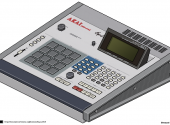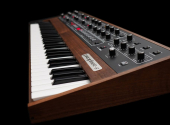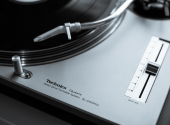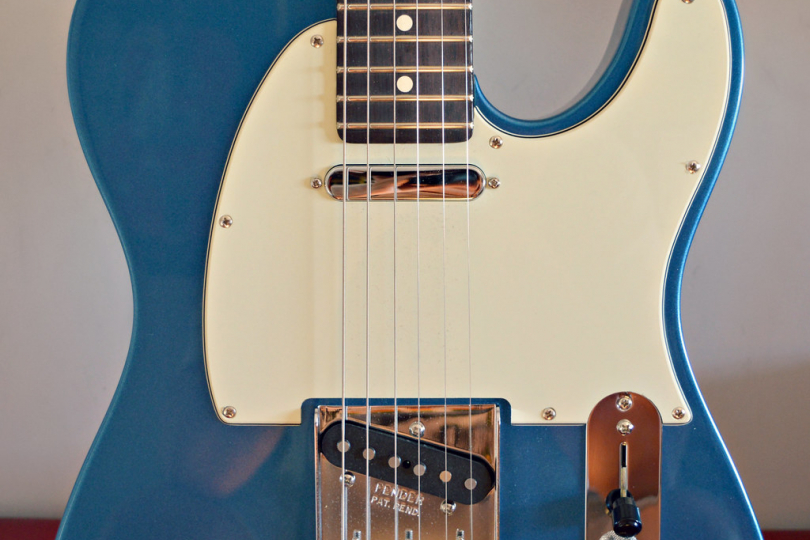
The Gear That Made Us #5: The Fender Telecaster
Originally named the "Fender Broadcaster" and launched in 1950, the Fender Telecaster is noted as the world’s first commercially available electric guitar. Revered for its elegant simplicity and versatile nature, it has been used by many leading musicians since its introduction. Join me in this piece to take a closer look at why it was (and still is) such a groundbreaking instrument in the latest installment of: The Gear That Made Us.
A natural progression
While the first prototype of the original Fender Telecaster was completed in 1949, it would take three more years before its creator Leo Fender would be free of patent and naming infringements before the instrument could work to build a more sizable audience. Despite initial challenges, it was in 1952 when the Fender company began producing the guitar in larger numbers.
A predecessor to the equally popular Fender Stratocaster (see The Gear That Made Us #3), it is interesting to note that the Telecaster is one of the few mass-manufactured products in which its initial design is considered to be its best upon release. Because of this fact, earlier models such as the 1951 "Nocaster" are still reissued by the company today.
Just like the "Strat", the "Tele" (a nod to the advent of television at the time), was a versatile instrument that has since lent itself to many styles and genres including country, rock, pop, blues, jazz, and more. The gently euphoric riff from Status Quo’s “Whatever You Want” which can be heard above is just one example of the many memorable guitar lines that have been created with the instrument. In this instance, it was Rick Parfitt and a white 1965 Telecaster that did the job though fellow frontman Francis Rossi was also a keen user.
A new approach
Although the whole design of the instrument was geared towards mass production, it is important to note that a lot of thought still went into the sound that the instrument was capable of. Leo Fender’s theory concerning using a solid body was that it would deliver a cleaner version of the string’s inherent tone when amplified. Another interesting aspect of the sound was the level of solidity and sustain that could be achieved—something offered straight out of the box. In this case, it was down to the six strings that passed through the body, anchored at the back of the guitar by six ferrules.
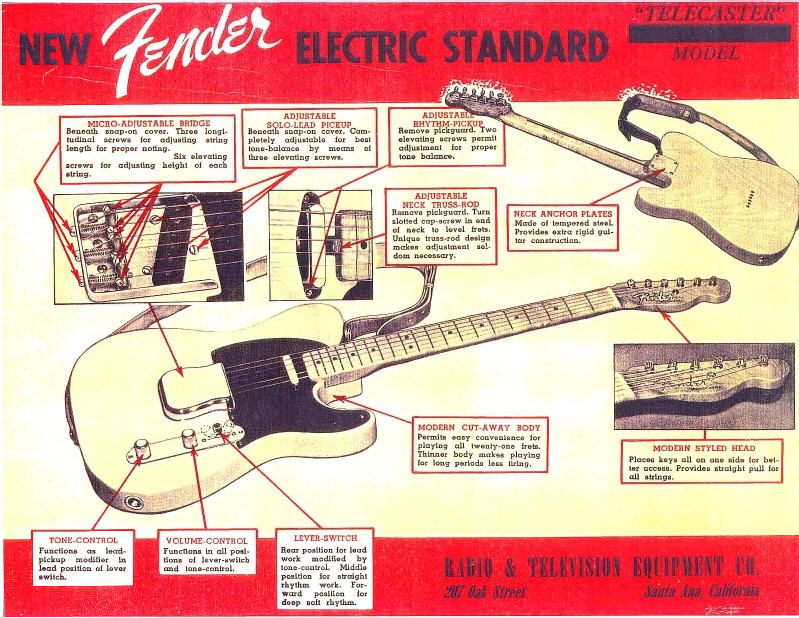
As hinted at by the previous image, the marketing approach that Fender chose to implement with the Telecaster was also noticeable for the time. Accentuating features and style in a similar way to automobile brochures, the aspiring rock stars of the future were transported into a new world of reliable "riffage" in a way that seemed inviting and forward-thinking. While the standard Telecaster design would remain a classic, many would slightly alter aspects of their instrument (for example the pickups or the saddle) in order to offer something unique.
Simple is good
In today’s fast-paced age there have never been more ways for musicians and artists to shape and sculpt their sound. From pedals to pickups and everything in between, it is this somewhat excessive aspect to music creation that could explain why it is the simplicity of the Fender Telecaster that has allowed it to become such a widely used instrument across the decades. Originally created with just one single-coil pickup and known for its bright cutting tone plus no-nonsense operation, many would argue that the humble piece of gear is the most revolutionary and important musical device in popular culture of the last seventy years.
Artists that have chosen to utilize the Telecaster on records include rock greats like Bruce Springsteen, Keith Richards, and Graham Cox. Nonetheless, you can get a glimpse into the versatility of the Telecaster when you listen to its use on tracks such as "Folsom Prison Blues" (Luther Perkins) and Rage Against The Machine’s "Killing in the Name" (Tom Morello). In terms of the latter track, it is interesting to note that Morello usually opts for a Floyd Rose Stratocaster though a Telecaster in Drop D is still more than capable of delivering monstrous riffs.
Breaking ground, setting trends
So how to summarize the Fender Telecaster? Personally, I see it as a great example of an instrument that was able to incorporate multiple design elements in order to create something rare and eternal. Versatile but classic. Reliable but innovative. Bright but punchy. Simple and effective. What is particularly unique about the Telecaster is that from its youthful beginnings as a "pickup" tester that was borrowed by country musicians for gigs, it was later able to inspire the modern rock combo and make it possible for smaller groups of musicians to get together and be heard.
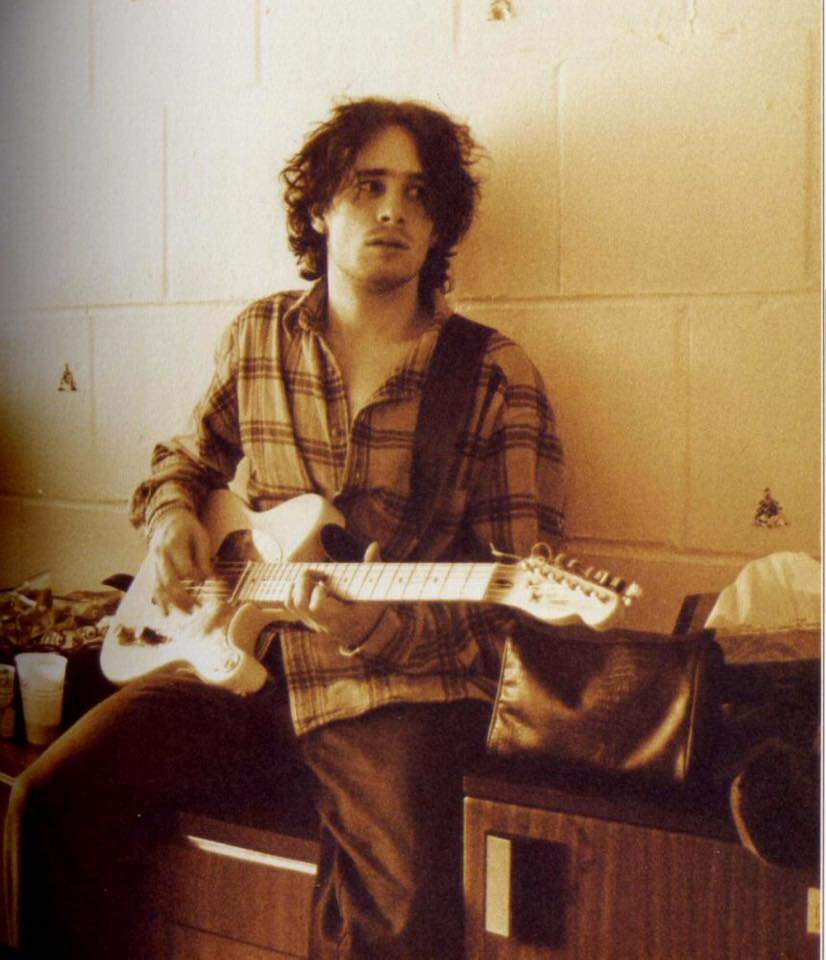
So what do you think of the Fender Telecaster? Was it the most important electric guitar of our time? Let us know in the comments below.
If you have found an error or typo in the article, please let us know by e-mail info@insounder.org.


